Let’s talk about fantasy worlds from various sources. I’m going to start, of course, with C.S. Lewis’s Narnia, a world simple enough for children and complex enough for adults.
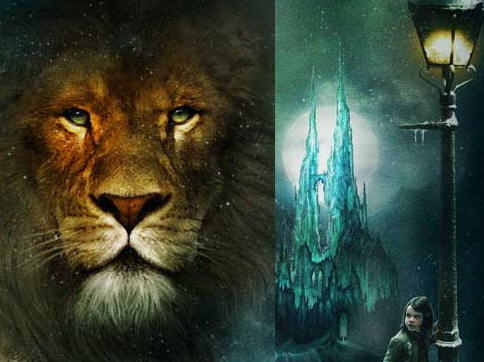
Narnia photo credit: davemc500hats via photopin cc
Magic
Magic infuses Narnia from the beginning when Aslan sang it into being. But for the reader magic starts from the time Lucy hides in an old wardrobe and finds snow.
There’s the Deep Magic used when Aslan created Narnia described in thrilling detail in The Magician’s Nephew. And there’s even a Deeper Magic which Aslan relied upon to save Edmund in The Lion, the Witch, and the Wardrobe.
Of course, many times magic in Narnia is used for evil. Examples are the White Witch in The Lion, the Witch, and the Wardrobe, the Old Hag in Prince Caspian, and the Green Lady in The Silver Chair.
But there’s a good magic natural within Narnia as seen in the naiads and dryads. Evil can drive this good magic to ground but it’s always there waiting for Aslan to reawaken it as He does in Prince Caspian.
Sentient Species
Many fantasies and science fiction stories have numerous sentient species coexisting together. The same holds for Narnia. From ordinary humans to talking beasts, from dancing trees to underground dwellers, Lewis revels in a variety of historical imagination, borrowing from mythology and children’s literature.
And as everyone knows: Anything with centaurs is cool. Minotaurs… eh, not so much.
Separate species does not mean separate morals. Lewis confirms the stance that wanton killing of any sentient species is verboten. Look at Puddleglum and Eustace’s reaction in The Silver Chair when they discover the venison they were eating with the giants was from a talking stag. The two push their plates away and direct Jill Pole to do the same.
Sentient species have to make their own moral choices. Lewis gave no excuses to non-humans or humans for bad decisions. Two incidents come to mind: The argument between the two dwarfs and the badger over what to do with an on-the-run Prince Caspian and penitence being done by the grounded star in The Voyage of the Dawn Treader for some unexplained past infraction.
History
The Pevensie children, and indeed us readers, are dropped into Narnia at a time when much history had already taken place and much more is left to be determined.
Using the device that differing worlds would most likely have differing times, Lewis takes his heroes and his readers through the gamut of Narnian history from origin to destruction within the lifetime of three generations on Earth. This allowed us to connect with a handful of characters from our time as they engaged across the ages with others from Narnia. Reading the seven books gives you a seat to view the condensed history of an entire world.
For me, that’s fun.
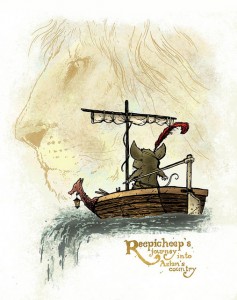
Reepicheep photo credit: greatkithain via photopin cc
Physics
Here we get away from some of what’s normal on Earth. Narnia is flat, not round, more like the stories from the sailors of old. Lewis uses this to great effect in The Voyage of the Dawn Treader. Reepicheep, in one of my late wife’s favorite lines in all literature, announces he will sail to the world’s end until he reaches Aslan’s country. He is resolute. As readers, we are conquered by this little courageous mouse.
Then there’s the whole thing with a lamppost in the wood… lit, mind you. It’s genius when Lewis comes back in The Magician’s Nephew to explain this, like an inside secret with his reader.
Stars and planets still creep through the night sky, but different stars and different planets. The reader gets the idea the sky may be more dramatic in Narnia than on Earth, but the real drama is in the sentient spirit.
Theology
Here we go! This is the reason behind the books: To explain in story the Great Story of redemption.
Narnia’s theology is not a set of rules or a charge to fight a holy war or a nebulous mental state. Narnia’s theology, like Christianity, is wrapped up in flesh. To right the wrongs caused by sentient creatures requires, both in symbol and in actuality, a willing and perfect sacrifice. At the end of The Voyage of the Dawn Treader we get a subtle compass toward who Aslan is in our world, one that is both Lion and Lamb, if a reader hadn’t figured it out before.
Beyond theology Lewis gives us earthlings life lessons as seen through an array of characters. We see our need in Edmund’s repentance in The Lion, the Witch, and the Wardrobe and in his humble and obedient spirit in Prince Caspian. Edmund is one of my favorite characters.
We learn about the traps of temptation in Caspian’s ethical quandary when pressed by certain defeat in Prince Caspain, from Lucy’s envious eye as she reads the book of spells in The Voyage of the Dawn Treader, between Edmund and Caspian’s disagreement over the pool of gold in the same book, and by the subtle enticements of the Green Lady on Puddleglum, Eustace, and Jill in The Silver Chair.
Eustace’s dragon transformation in The Voyage of the Dawn Treader and the vanity of the Dufflepuds in the same book become lessons on pride, one from the standpoint of submission, the other from wanton foolishness.
The constant reminders of “He’s not a tame lion, you know” in The Last Battle show how heresy comes from unbalanced truth.
My favorite message is in The Horse and His Boy. As Shasta walks along in the forest so discouraged and alone, a Presence joins him. He discovers how Aslan had been watching over him, protecting him, and guiding him through his trials even from his birth. Ah… Pa, that one makes me cry.
These are all pictures for us readers to glimpse a bit into our own souls and upon our own needs, to see the universality of trials and to gain a view of a real Person waiting to guide us through.

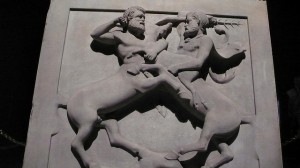
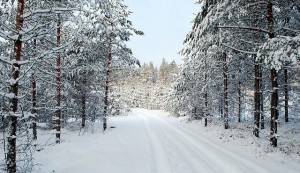
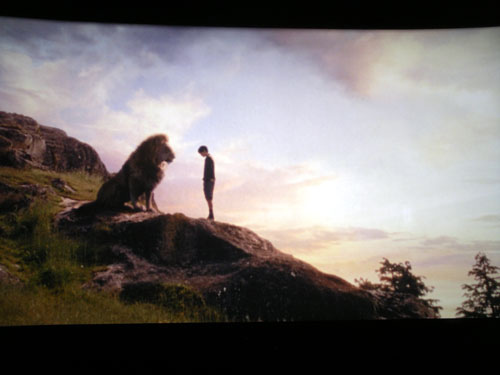

[…] story and used the $5 for her stocking. She cross-stitched me my favorite passage from my favorite Narnia book of The Horse and His Boy. As we looked back on that Christmas, those gifts meant so much more […]
[…] experience the world of Narnia through the eyes of a bright, little girl by the name of Lucy and her spiteful brother Edmund. […]
[…] look into the intriguing world of Panem from The Hunger Games Trilogy. No spoilers though! You need to find out some things […]
[…] author with any imagination at all can easily switch from science fiction to fantasy. Lewis built Narnia as a world with boundaries and rules, there is an element of being grounded in a dimension a reader […]